Sapa - A Blooming Flower Of Northwest Vietnam
Located in the Northwest of Vietnam, Sapa is a blooming flower of its mountainous area. Find out the best time to visit, things to do and top tourist attractions with our Sapa Travel Guide.
Located in the Northwest of Vietnam, Sapa is a colorful and charming town of Lao Cai province. Alike to Hoi An and Ha Long Bay, this mountainous region attracts its visitors based on its natural beauty. The spectacular landscape of Sa Pa is a great combination of people‘s endless creativity and the topography of the mountains which successfully draw a picture of heaven on earth arranged in a harmonious arrangement and attractive dreamy colors. It is a perfect destination for trekking, with the great panoramic views of the local surroundings, where you can see the tiny hill tribe villages and verdant rice terraces from afar.
Established as a hill station by the French in 1922, the charming highland town of Sapa is the one place in the northwest where tourism is booming. The magnificent scenery is on a very grand scale, and the town is orientated to make the most of the spectacular views that open up on clear days. Perched on a steep slope, Sapa overlooks a plunging valley of cascading rice terraces, with mountains towering above the town on all sides.
Best time to visit Sapa
The average annual air temperature in Sapa is 15°C. In the summer, luckily, the town does not suffer from the intense sunlight like coastal plains, about 13°C - 15°C at night and 20°C - 25°C during the day. Winters are often cloudy and cold with temperatures sometimes below 0°C, and snow is available for a short period. The average annual rainfall here ranges from 1,800 to 2,200 mm and it mostly concentrates in the period from May to August.
Spring is the season in which northwestern mountainous forests have the appearance of peach petals, plum blossoms, Sa Pa is no exception.
September is the harvesting season in Sapa so do not forget to get your camera charged in full or else you will regret every single step you walk.
The weather in Sapa from the end of December to Tet is cold and windy but if you are interested in feeling the chill cold as well as (if lucky) watch the snow falling and build your own cute snowman, you should come here during this time.
Top tourist attractions of Sapa
Cat Cat Village
Within a short walking distance of the center of town, Cat Cat village is one of the most popular attractions in Sapa. Formed in the 19th century, the village was established by ethnic families, such as the Black H’mong and Dzao who came from different mountainous regions in northern Vietnam. A light trek to this village is a perfect opportunity to admire the quiet scenes of the local community going about their day-to-day life and get more knowledge about its tradition of creating silver and gold jewelry.
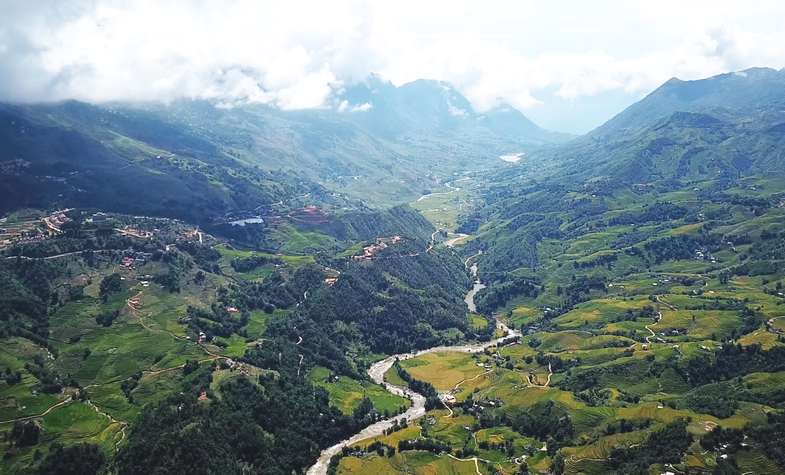
Panoramic view from Cat Cat village
Sin Chai Village
Located at the foot of Fansipan Mountain (about a 40-minute walk from the town), Sin Chai village is one of the best view spots in Sapa. Offering spectacular landscapes and cultural experience, Sin Chai village is the site that you don’t want to miss during your trip to Sapa. Similar to Cat Cat Village, Sin Chai offers a true traditional cultural experience with fewer tourists, which enables it to be one of the unreached hill-tribe villages for tourism. Hiking up on the mountain to reach Sin Chai, travelers are exposed to a wonderful painting of rice paddles, waterfalls, and leisurely grazing buffaloes.
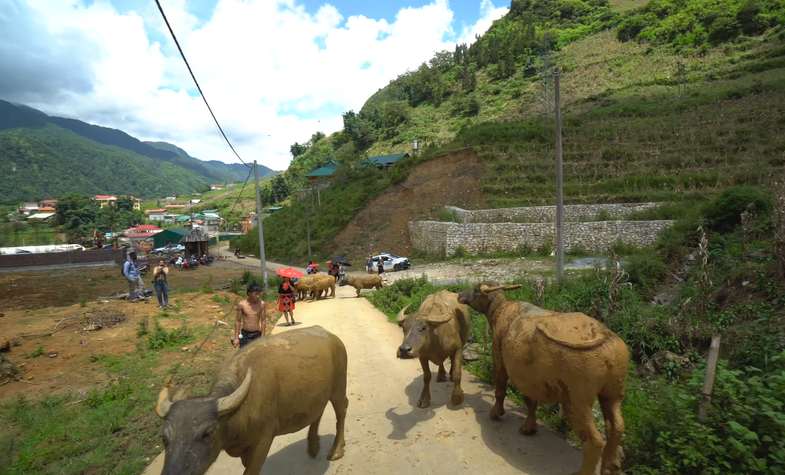
Laid-back lifestyle in Sin Chai Village
Lao Chai Village
Situated at a high point and hidden in Muong Hoa valley, Lao Chai village is only 6 kilometers from Sapa town and is the home of the Giay and Black H’Mong minorities. This village offers not only the spectacular landscapes while trekking along the narrow and magnificent paths but also the special cultural experiences of the local people living here.
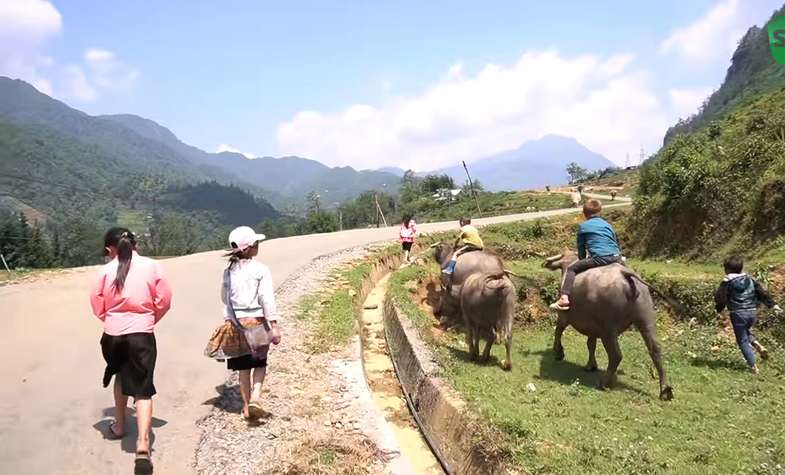
Lao Chai Village, Sapa
Ta Van Village
Located next to Lao Chai village, Ta Van village lies at the foot of a mountain, with just 110 households and about 550 inhabitants of the Giay and Dzao minority groups. Most tourists want to visit all beauty of Muong Hoa Valley so they often combine the visit to both Lao Chai and Ta Van in a day. Visiting this village, you will be stunned by the idyll, rusticity blending with the humble but marvelous houses of the locals in the village, also be impressed by the unique culture and lifestyle of local people here. The trekking roads in Ta Van are small but beautiful with rice terraces around. It is also a nice village for your local homestay experience.
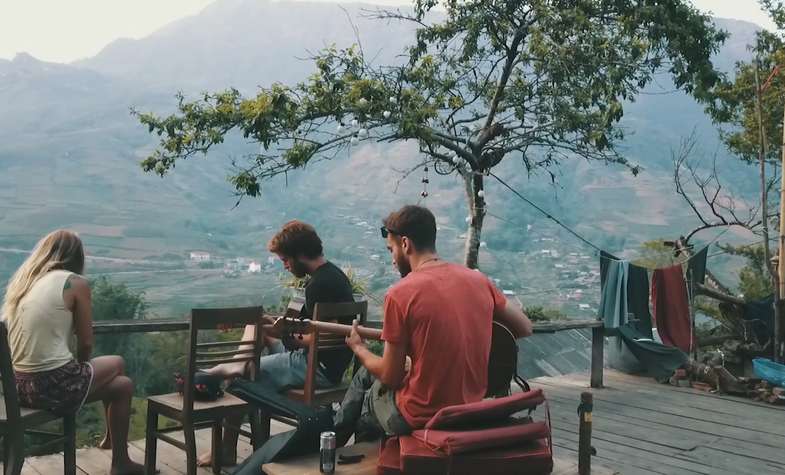
View from a rest stop in Tan Van village
Maybe you like our tours: | North Vietnam highlights tour | Best of Vietnam Cambodia tour | Sapa retreat - 4 days 3 nights
Giang Ta Chai Village
Giang Ta Chai village is far from the center of Sapa about 15 kilometers. Located at the right side of Muong Hoa Valley, Giang Ta Chai is the village of Red Dao and has become the attractive places for visitors who want to experience the colorful traditional customs. Opposite to Muong Hoa stream, Giang Ta Chai lies silently by a majestic waterfall and was hidden by old trees and bamboo groves. Like other beauty spots in Sapa, here visitors will admire the gorgeous picture of mountains and rice terraced fields.
Ham Rong Mountain
The Ham Rong Mountain peaks at an impressive 1,850 meters make it possible to view stunning sceneries of the local surroundings and sunset, as well as admire the local valleys and towns in the background. With the clear sunny days, it is also easy to catch a view of the outstanding Mt. Fansipan which is regarded as the Indochina rooftop. The Ham Rong Mountain range is a relatively short walk from Sapa and the preferred time to visit is throughout spring when the flowers are beautiful in full bloom.
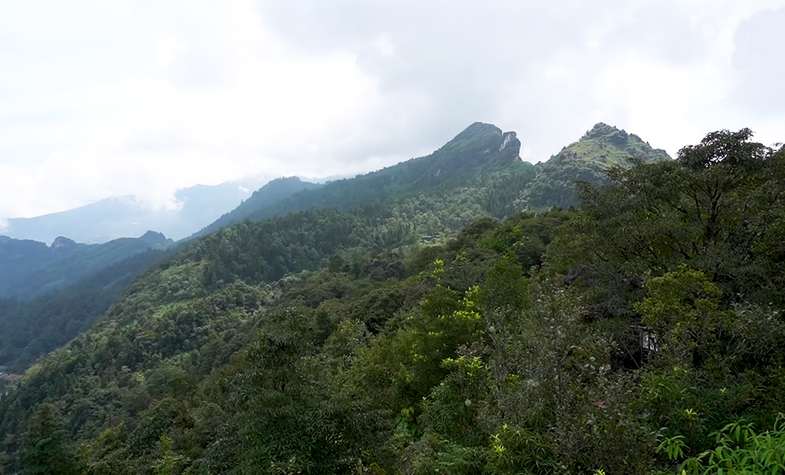
The dragon head-shaped summit of Ham Rong mountain
Fansipan Mountain
Bordering Sapa is the Hoang Lien Mountains with the nickname as the Tonkinese Alps by the French. These mountains include Fansipan, located at 3,143 meters above the sea level, also famous to be Indochina’s roof. The summit of Fansipan is just 9 kilometers from Sapa and can be reached on foot but takes 48 hours with at least one-night spending in bamboo huts or tents at a height of 2,200 meters. But for those who want to reach the summit as quickly as possible, there is the cable car system that can take you to the top of the mountain within about 15 minutes. A visit to Fansipan Mountain is a top highlight for the adventurous travelers that wish to conquer this wonderful mountain range.
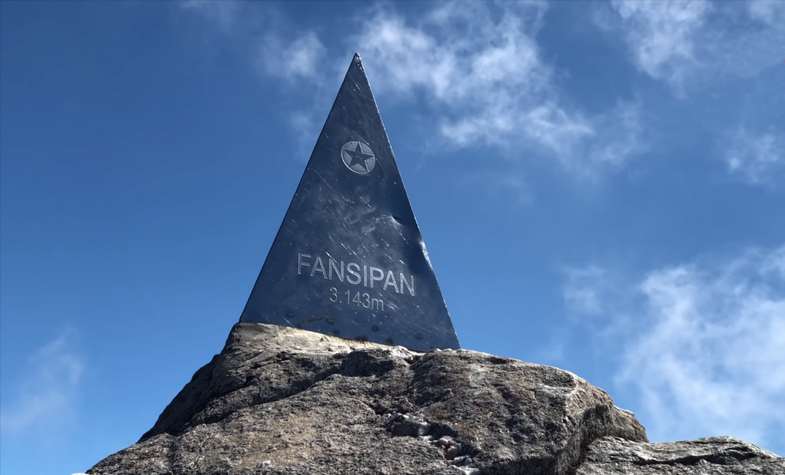
Summit of Fansipan - The Rooftop of Indochina
Silver Waterfall (Thac Bac Waterfall)
Silver Waterfall lays on the road to Tram Ton Pass, far about 12 kilometers from Sapa town. From the distance, Silver Waterfall looks like a white dragon diving into the stream below. Because of how it looks when seeing from Ham Rong Mountain as silver, it is called by a romantic name “Silver Waterfall”. This is a beautiful waterfall where you can see a stunning view of the surrounding mountains and forests.
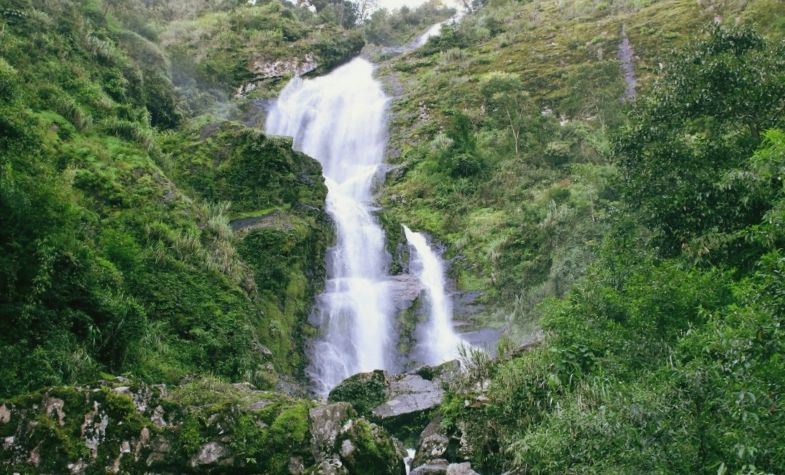
Thac Bac - Silver Waterfall, Sapa
Love Waterfall
About 14 kilometers from Sapa town to the southwest, Love Waterfall is one of the indispensable tourist sites in the journey discovering Sapa. Love Waterfall is also the starting point of climbing travel itinerary conquering the Fansipan peak. Before arriving here, tourists will have a chance to discover the sleeping beauty of the primitive forests surrounded by a mossy old canopy of bamboo. The spectacular scenery like the ink-wash painting has bought Love Waterfall to become one of the most attractive tourist attractions in Sapa.
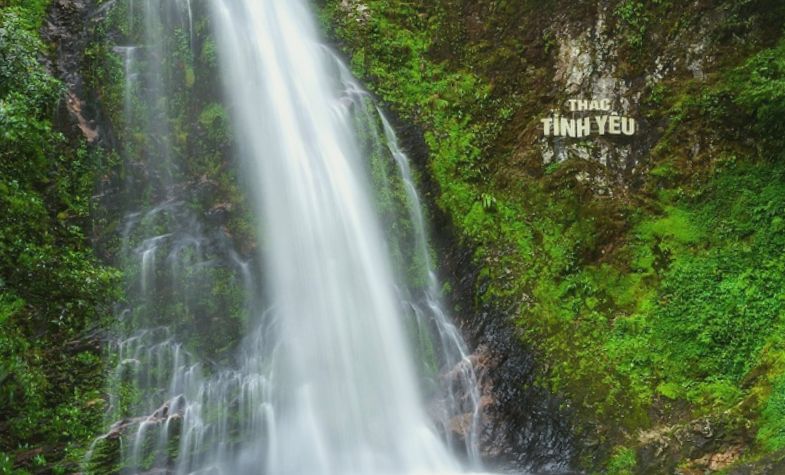
Thac Tinh Yeu - Love Waterfall, Sapa
Sapa Ancient Rock Field
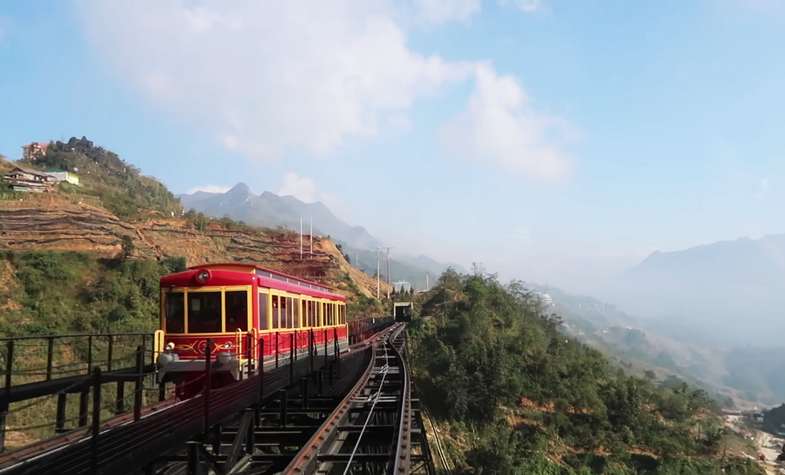
You can observe the beauty of Muong Hoa valley from a mountain-climbing train
This field locates in Muong Hoa valley, on the mountain road, with a lot of small and large boulders alternating in trees, near the side of the road, or in water rice paddies. Mystery stories on curse carved in Sapa ancient rock field strongly attract tourists when exploring the pristine land. Thanks to the unique nature and colorful cultural beauty of the ethnic groups, the ancient rock field has become an impressive and interesting spot in Sapa.
Best food in Sapa
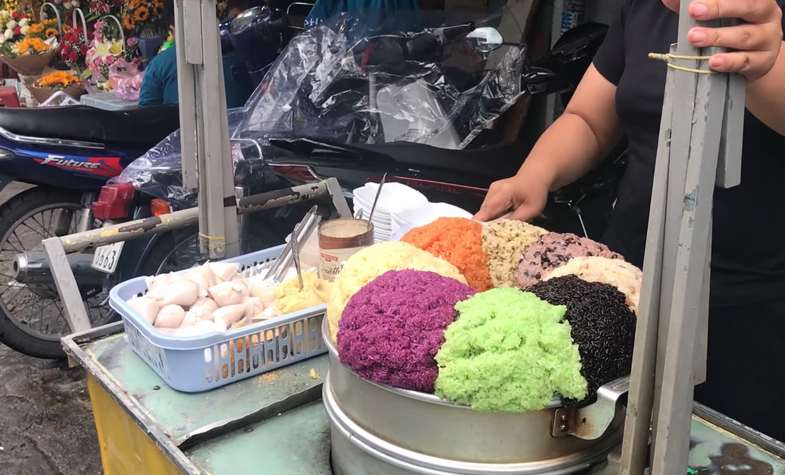
Enjoy Xoi ngu sac in Sapa
Sapa is a beautiful town in Northern Vietnam, known for its stunning scenery and vibrant cultural heritage. However, it is also home to some of the most delectable dishes in the country. One of the must-try foods in Sapa is Thang Co, a traditional Hmong stew made with horse meat and offal, flavored with fragrant herbs and spices. Another local specialty is grilled salmon, caught fresh from the nearby streams and served with a variety of dipping sauces. And of course, no visit to Sapa would be complete without sampling the iconic rice dishes, such as Xoi ngu sac, a colorful sticky rice dish mixed with various beans and peas, or com lam, a fragrant dish made with rice cooked in bamboo tubes. Overall, Sapa's cuisine is a delightful blend of local ingredients and traditional cooking techniques that is sure to satisfy any food lover's cravings.
***
Travel Authentic Asia Company is your best choice for discovering the beauty of Southeast Asia. Our experienced and knowledgeable travel advisors are committed to helping you create a tailor-made tour and extraordinary experiences in this majestic region.
If you're looking for an authentic cultural experience, do not hesitate to contact Travel Authentic Asia to choose a Vietnam tour, Southeast Asia tour package or to customize your own style tour to South East Asia.

